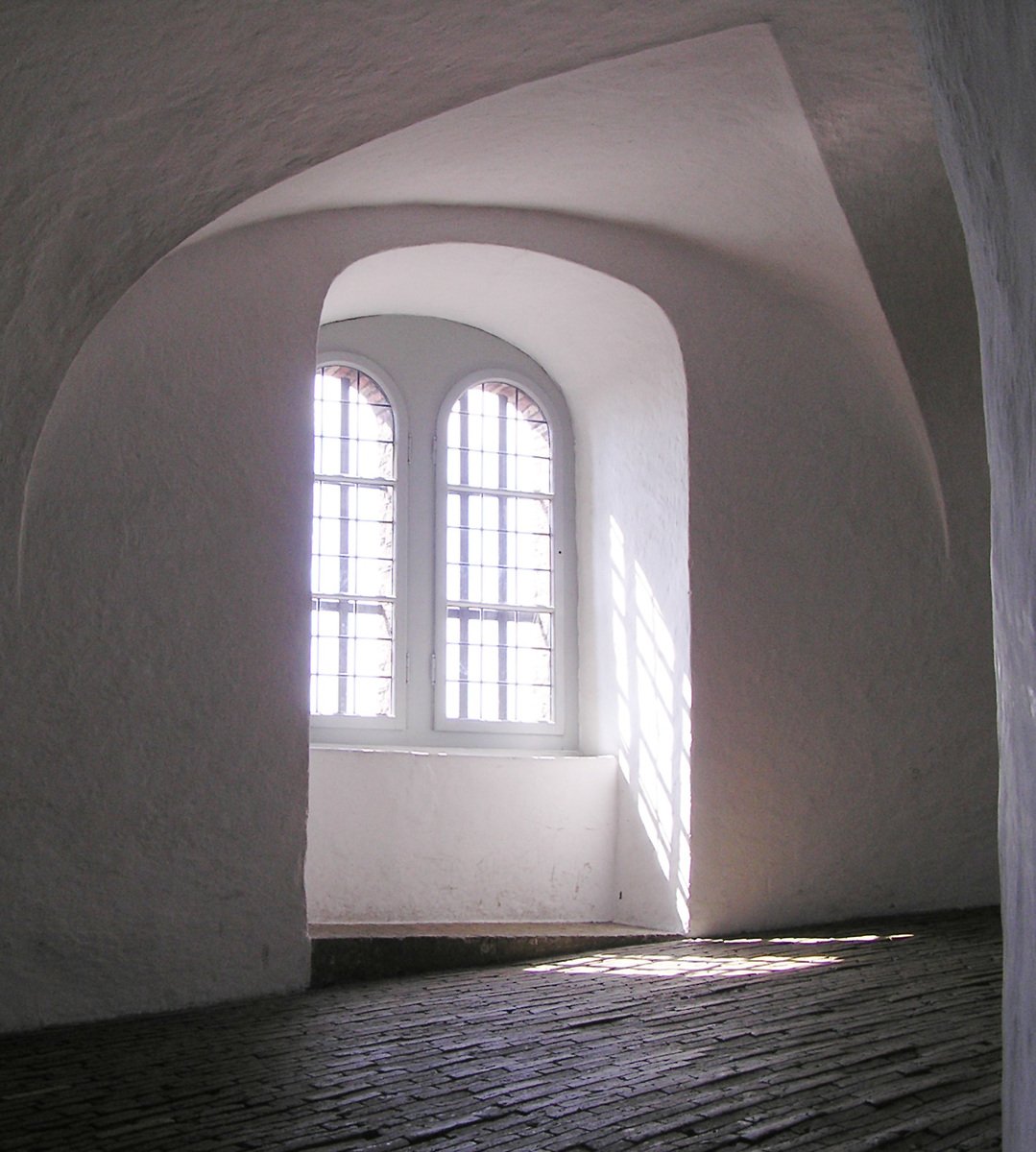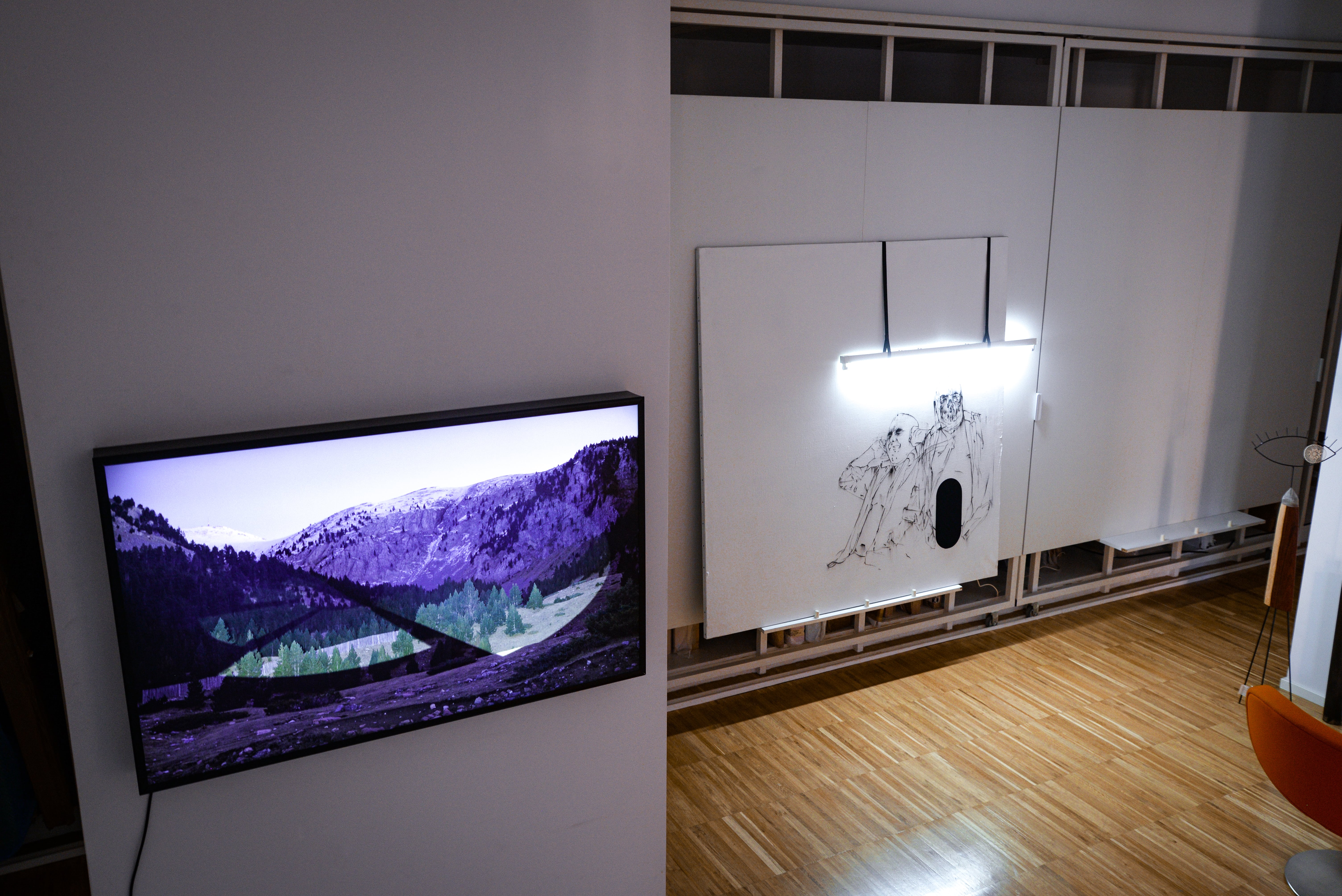La Luz en el Arte / The Light in the Art

La Galería Ana Serratosa ha buscado, en esta ocasión, hablar de un tema que suele pasar desapercibido como temática en las galerías de arte: la luz. Y es que, si hay algo que nos gusta, es que nos invada la luz.
Ya sea en nuestra vida, paseando por la calle o en nuestros hogares. La luz en aquello que no solamente ilumina nuestra vista, si no que nos ayuda a observar todo aquello que pasa a nuestro alrededor. De esta misma manera, nos ofrece apreciaciones de diferentes matices, ya que una sola fuente de luz nos puedes generar múltiples interpretaciones: no es la misma luz la de un amanecer, que la de un atardecer, e incluso encontramos diferencia entre la luz solar de verano e invierno…

Luz entrando en la Torre de Copenhague
La historia de la luz en el arte
En la historia del Arte, la luz ha jugado un papel fundamental, desde tiempos del cristianismo, por ejemplo, donde el Sol y su luz se relacionaban con Dios, y por tanto las iglesias se construían en orientación este para que la luz solar bañase el edificio.
Con la llegada del Gótico, no se hizo más que reafirmar esa idea, dejando atrás los edificios angostos y oscuros que dio el Románico y abriéndose a ventanas, vidrieras y todo aquello que dejase pasar la luz natural.
En el Cinqueccento, artistas como Caravaggio desarrollaron el Claroscuro, técnica mediante la cual, los artistas retrataban escenarios con un fuerte contraste entre luz y oscuridad, para destacar ciertos elementos de la composición, como objetos o los mismo personajes de la escena.

Adam de Coster, Hombre Cantando Candelabro, Arte Claroscuro
En la Galería Ana Serratosa recientemente se inauguró la exposición “El Lenguaje del Color”, donde se hablaba, entre otras cosas, de aquella simbología y sensaciones que nos producían los colores y como nos afectaban como espectadores.
¿Y qué son los colores, sino la descomposición de la luz?
Hasta el s.XIX, los cuadros se realizaban en estudio, generalmente debido a la naturaleza de los materiales de los artistas, que debido a sus composiciones químicas, se hacían en el momento y no se contemplaba salir al exterior a pintar por la labor que conllevaba prepararlos.
Pero más adelante se crean los tubos de pintura, que hacían que esta se conservase cuando se cerraba herméticamente, permitiendo a los artistas salir al exterior y pintar con luz natural y con mucha más velocidad.
Un ejemplo que retrata esto perfectamente es la serie de cuadros de la Catedral de Rouan, de Claude Monet, donde el artista se dedicó a retratar la misma escena, la portada de la Catedral de Rouan, en Francia, pero en diferentes épocas del año y a diferentes horas del día, y es así como vemos una variación de la luz que hace que los cuadros sean totalmente diferentes los unos a los otros.

Catedral Rouen Monet - La luz en el arte
La Luz en la Galería Ana Serratosa
Gracias a la luz, percibimos los colores, los tonos, y la intensidad de los mismos, pero en cuanto la luz varía, todos estos elementos varían. Y es que la luz tiene el poder de transformar. No solo transforma la percepción que tenemos sobre las cosas, si no que transforma los espacios en los que nos movemos y nos relacionamos.
Desde la Galería Ana Serratosa hemos preparado una exposición repleta, no solo de lienzos, si no de instalaciones, con una temática principal: la luz.
En esta exposición, cuyo título es "Capturados por la luz", vamos a ver piezas que funcionan como instalaciones lumínicas, como las obras de Fabrizio Cornelli, que mediante juegos de luces y sombras provenientes de unas cajas que bien podrían no contener nada, y sin embargo, una vez entran en funcionamiento, descubrimos unas imágenes delicadas y solemnes que nos evocan a movimientos íntimos y delicados como puede ser un acercamiento entre dos personas o un momento de relajación.
También podremos ver una muestra de cómo la luz modifica los escenarios que consideramos inamovibles, como es el caso de las fotografías de Javier Riera, que proyecta imágenes geométricas sobre la vegetación de campos y bosques, modificando así, de una manera no invasiva, su naturaleza para que los percibamos de una manera totalmente diferente a lo que estamos acostumbrados.
Bernardí Roig nos sumerge en su dramatismo que roza prácticamente lo teatral para adentrarnos en su mente, con luces de neón y colores monocromos, interrumpidos únicamente por alguna nota de color puntual.
Por último, pero no menos importante, Kibong Rhee nos muestra uno de sus paisajes envueltos en niebla, donde la luz atraviesa las capas de una manera más dificultosa, demostrándonos que hasta la ausencia de luz, en algunos casos, puede generar imágenes tan bellas como esta.

Capturados por la luz - Exposición Galeria Ana Serratosa
Esta es otra oportunidad para poder deleitarse de como un tema como la luz puede enseñarnos a interpretar las obras y los espacios de una manera totalmente diferente, prestando atención a aquello que suele pasar desapercibido ante nuestros ojos.
Galería Ana Serratosa has sought, on this occasion, to talk about a subject that usually goes unnoticed as a theme in art galleries: light. And it is that, if there is something that we like, it is that the light invades us.
Whether in our life, walking the streets or in our homes. Light in that which not only illuminates our sight, but helps us to observe everything that happens around us. In the same way, it offers us insights of different shades, since a single light source can generate multiple interpretations: it is not the same light as a sunrise, that of a sunset, and we even find difference between summer and winter sunlight...

Light entering the Tower of Copenhagen
The history of light in art
In the history of art, light has played a fundamental role, since the times of Christianity, for example, where the Sun and its light were related to God, and therefore churches were built in east orientation so that sunlight bathed the building.
With the arrival of the Gothic, this idea was only reaffirmed, leaving behind the narrow and dark buildings that gave the Romanesque and opening to windows, stained glass and everything that let natural light.
In the Cinqueccento, artists such as Caravaggio developed Chiaroscuro, a technique through which artists portrayed scenarios with a strong contrast between light and darkness, to highlight certain elements of the composition, such as objects or the same characters in the scene.

Adam de Coster, Hombre Cantando Candelabro, Arte Claroscuro

Capturados por la luz - Exposición Galeria Ana Serratosa
In the Ana Serratosa Gallery recently opened the exhibition "The Language of Color", where we spoke, among other things, of that symbolism and sensations that produced colors and how they affected us as spectators.
And what are colors but the decomposition of light?
Until the 19th century, the paintings were made in the studio, usually due to the nature of the artists' materials, which due to their chemical compositions, were made at the time and it was not contemplated to go outside to paint for the work involved in preparing them.
But later the paint tubes were created, which made it conserve when it closed hermetically, allowing the artists to go outside and paint with natural light and with much more speed.
An example that portrays this perfectly is the series of paintings of the Cathedral of Rouan, by Claude Monet, where the artist dedicated himself to portraying the same scene, the cover of the Cathedral of Rouan, in France, but at different times of the year and at different times of day, and that’s how we see a variation of light that makes the pictures totally different from each other.

Catedral Rouen Monet - La luz en el arte
The Light in the Ana Serratosa Gallery
Thanks to the light, we perceive the colors, the tones, and the intensity of them, but as soon as the light varies, all these elements vary. And the light has the power to transform. It not only transforms the perception we have about things, but it transforms the spaces in which we move and relate.
From the Ana Serratosa Gallery we have prepared an exhibition full, not only of canvases, but of installations, with a main theme: light.
In this exhibition, whose title is "Captured by Light", we will see pieces that function as light installations, such as the works of Fabrizio Cornelli, that through games of light and shadows coming from boxes that might well contain nothing, and yet, once they come into operation, we discover some delicate and solemn images that evoke us to intimate and delicate movements such as a rapprochement between two people or a moment of relaxation.
We can also see a sample of how light modifies the scenarios that we consider immovable, as is the case of the photographs of Javier Riera, who projects geometric images on the vegetation of fields and forests, thus modifying, in a non-invasive way, their nature so that we perceive them in a totally different way than we are used to.
Bernardí Roig immerses us in his dramatism that touches practically the theatrical to get into his mind, with neon lights and monochrome colors, interrupted only by a note of spot color.
Last but not least, Kibong Rhee shows us one of its foggy landscapes, where light crosses the layers in a more difficult way, showing us that even the absence of light, in some cases, can generate images as beautiful as this.

Capturados por la luz - Exhibition at Galeria Ana Serratosa
This is another opportunity to enjoy how a theme like light can teach us to interpret works and spaces in a totally different way, paying attention to what usually goes unnoticed before our eyes.
